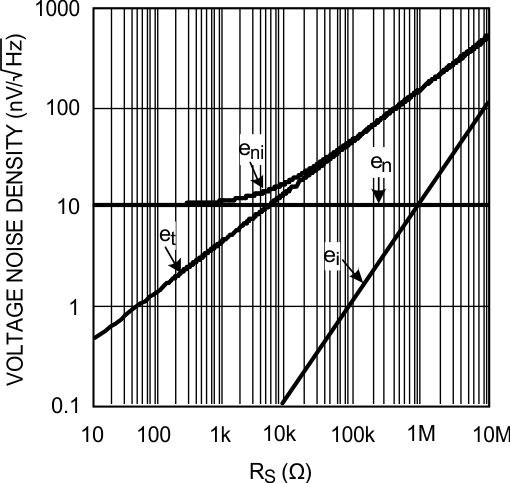JAJSKX8D December 2020 – October 2024 LMP7704-SP
PRODUCTION DATA
7.1.2 Total Noise Contribution
The LMP7704-SP has a very-low input bias current, very-low input current noise, and very-low input voltage noise. As a result, this amplifier is an excellent choice for circuits with high-impedance sensor applications.
Figure 7-2 shows the typical input noise of the LMP7704-SP as a function of source resistance where:
- en denotes the input-referred voltage noise.
- ei is the voltage drop across source resistance due to input-referred current noise or ei = RS × in.
- et shows the thermal noise of the source resistance.
- eni shows the total noise on the input, where:

 Figure 7-2 Total Input Noise
Figure 7-2 Total Input NoiseThe input current noise of the LMP7704-SP is so low that this noise does not become the dominant factor in the total noise unless the source resistance exceeds 300 MΩ, which is an unrealistically high value.
As is evident in Figure 7-2, at lower RS values, total noise is dominated by the amplifier input voltage noise. If RS is larger than a few kilohms, then the dominant noise factor becomes the thermal noise of RS. As mentioned previously, the current noise is not the dominant noise factor for any practical application.